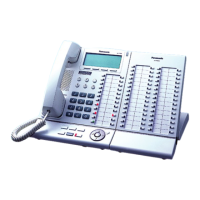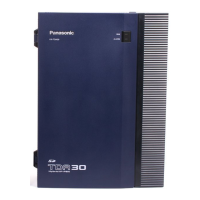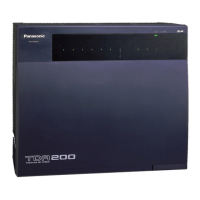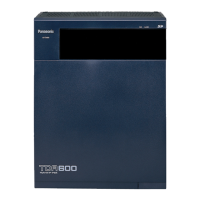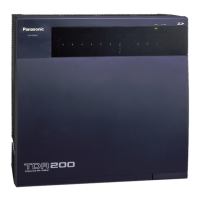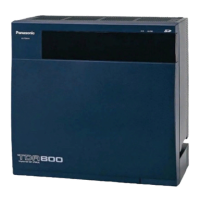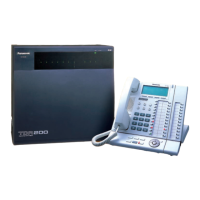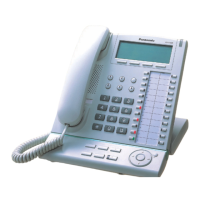1.10 Conversation Features
Feature Guide 99
Conditions
[APT + SLT]
• If one telephone goes off-hook while the other is on a call, a three-party call is established. If one user
goes on-hook, the other user continues the call.
• An extension user cannot originate a call from the SLT if the APT is:
– playing background music (BGM)
– receiving a paging announcement over the built-in speaker.
• The SLT will always ring for incoming calls (if its ringer is turned on). It cannot be programmed to not
ring.
[DPT + SLT]
• When in the parallel mode, the XDP mode of the Super Hybrid port should be off through system
programming.
• Whether the SLT rings for incoming calls is programmable.
Ring on: Both telephones ring when a call is received, except for when the proprietary telephone (PT)
is in Hands-free Answerback mode (→ 1.4.1.4 Hands-free Answerback) or voice-calling mode
(Alternate Receiving Ring/Voice) (→ 1.5.3 Intercom Call).
Ring off: Only the PT rings when a call is received, however, the SLT can be used to answer the call.
• If one telephone goes off-hook while the other is on a call, the call is switched to the telephone that goes
off-hook. Note, however, that the call will not be switched when the extension is:
a) Being monitored by another extension. (→ 1.5.3 Intercom Call)
b) Receiving an Off-hook Call Announcement (OHCA) (→ 1.7.4.3 Off-hook Call Announcement
(OHCA)) or Whisper OHCA. (→ 1.7.4.4 Whisper OHCA)
c) On a conference call (→ 1.13.1 Conference Features).
d) Using Live Call Screening (LCS) or Two-way Record is activated (→ 1.19.2 Voice Mail DPT
(Digital) Integration).
Wireless XDP
Parallel Mode
For information on this type of parallel connection, refer to
the Wireless XDP Parallel mode feature. (→ 1.20.3
Wireless XDP Parallel Mode)
Features Descriptions Connections
PBX
PS
PT
APT/DPT/SLT + PS
PS
SLT
Extn. 101
Extn. 101
Extn. 102
Extn. 102

